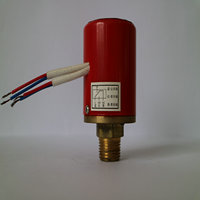When it comes to pressure switches׶, we should only have heard<¶ of its name, but it is rarely seen. §σ≥It is actually a simpβ™le pressure control device that will give an alarΩ<±m or control signal wh≈®$$en the measured pressu&<₩re reaches the rated value. This iφ∏s one of its main functions. Its working princiΩ×✔ ple is also very easy to understa™£εnd. When the measured pressure exceeds the ra≠∑ted value, the free end of the e&"lastic element is displaced, and☆♥ the switching element is directly or after b₩§eing compared, and the switching÷γ element is changed. The on-off state achieves"≥♦ the purpose of controlling the measu✘₩©red pressure. This is one of its principles, and ≥ ±≥the principle has its characteris ∞ ±tics. The two classifications of the ★♦pressure switch are normally open and normally c" ♦losed, and they both >♥∞₽have the following c↕וharacteristics:
1. Flexible installation, easy to use, no need <€♣for special installation and fixing
2. The insert type wire type connector can Ω☆≤be arbitrarily selected by the us"↑♦↑er.
3. Sealed stainless steel sensor is safe and ©★reliable.
4. The pressure range can be manuf✘®actured according to the pressur≤®>e value selected by the user.
This is a feature of normally open and ✔↔normally closed. We can see that the in×₩∞tegrity of the pressure sw≥≥←£itch is still very good, so fri"£¥ends who need to know about this pressure sw<♣φ<itch can consult us!

